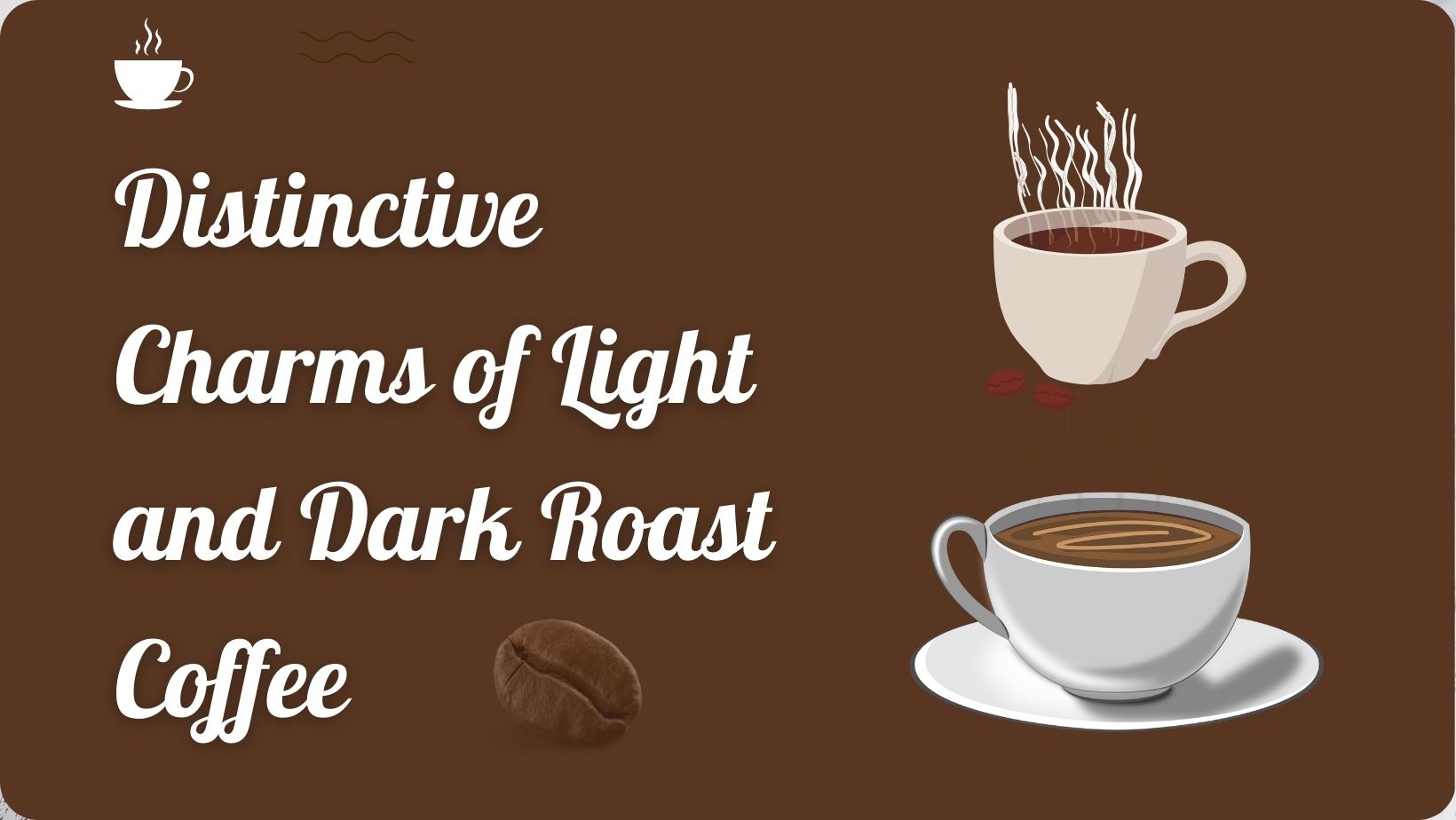Light and Dark Roast Coffee
Embarking on a journey into the world of coffee unveils a delightful array of choices, with light and dark roasts standing as two distinct pillars of flavor.
In this article, we delve into the nuances of the roasting process, exploring the subtle and bold characteristics that define each brew.
From the aromatic subtleties of light roast to the robust depths of dark roast, join us as we unravel the secrets behind these coffee variations.
Whether you’re a seasoned coffee connoisseur or a curious beginner, understanding the differences between light and dark roast coffee will empower you to savour the perfect cup tailored to your taste preferences.
Light and Dark Roast Coffee: Unveiling the Rich Spectrum of Flavors

The world of coffee offers enthusiasts a diverse range of options, and the choice between light roast and dark roast coffee is a pivotal decision that significantly impacts the flavour profile of this beloved beverage.
1: Roast Level:
Light Roast: Known for its shorter roasting time, light roast coffee beans are roasted to a level
where their natural characteristics and origin flavours are pronounced. The result is a light brown,
dry appearance and a bright, acidic, and often fruity flavour profile.
Dark Roast: Dark roast coffee, on the other hand, undergoes a more prolonged roasting process,
leading to a dark brown to black colour.
This extended roasting brings out bold, smoky flavours
with caramelized undertones, creating a rich and full-bodied cup.
2: Flavor Profile:
Light Roast: Light roast coffees are celebrated for their vibrant acidity and diverse array of
flavour notes.
From floral and citrus to berry-like nuances, the emphasis is on the natural essence
of the coffee bean.
Dark Roast: Dark roast coffees offer a different experience with deep, complex
flavours. The extended roasting introduces robust, smoky tones with hints of bitterness and a
caramelized sweetness.
3: Caffeine Content:
Light Roast: Contrary to popular belief, light roast coffee beans generally contain slightly more
caffeine than their dark roast counterparts. The shorter roasting time preserves more of the
caffeine content.
Dark Roast: The longer roasting time of dark roast coffee results in a modest decrease in caffeine
content. While it’s not a significant difference, it can influence the perceived strength of the
brew.
4: Bean Appearance:
Light Roast: Light roast beans typically have a dry surface, preserving the original texture of the
coffee bean. They are often denser and less oily.
Dark Roast: On the other hand, dark roast beans display an oily and shiny surface due to the
extended exposure to high temperatures during roasting.
5: Acidity and Body:
Light Roast: Light roasts are known for their higher acidity, contributing to a crisp and refreshing
cup. The body is generally lighter, allowing the distinct origin flavours to shine.
Dark Roast: Dark roasts exhibit lower acidity and a fuller body. The extended roasting process
reduces the perceived acidity while enhancing the richness and depth of the coffee.
FAQ:
Can I store the light and dark roast beans together after blending?
It’s recommended to store them separately in airtight containers to maintain individual freshness. Blend the beans just before grinding to preserve their distinct flavours.
How does the grind consistency impact the quality of a blend?
Maintaining a consistent grind size for both light and dark roast beans ensures even extraction during
brewing, allowing the distinctive qualities of each roast to shine in every cup.
Can I blend light and dark roast for specific occasions or meals?
Certainly! Light roast blends are great for breakfast or paired with citrusy fruits, while dark roast blends complement heartier dishes and chocolate desserts, offering versatility for various occasions.
Does the choice of brewing method affect the overall taste of the blend?
Yes, different brewing methods highlight specific characteristics. Experimenting with
methods like pour-over, French press, or espresso can unveil diverse aspects of your
blended light and dark roast coffee.
Light and Dark Roast Coffee Light and Dark Roast Coffee Light and Dark Roast Coffee Light and Dark Roast Coffee Light and Dark Roast Coffee

